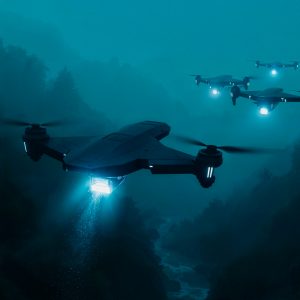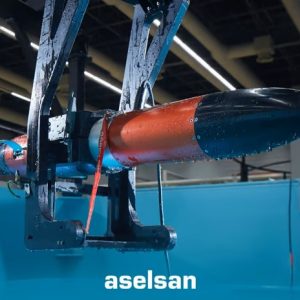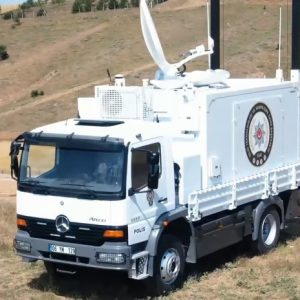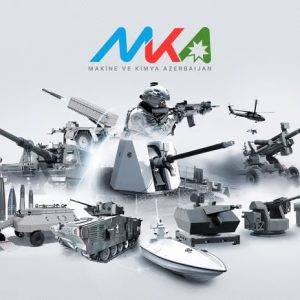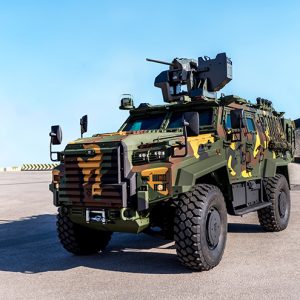The Sukhoi Su-57, Russia’s fifth-generation multi-role fighter jet, has long been the centerpiece of global attention due to its advanced design and stealth capabilities. Recently, new imagery has surfaced showcasing a significant modification to the Su-57 with a flat 2D thrust vectoring nozzle. This development marks a pivotal moment in the evolution of Russian aerospace technology, potentially positioning the Su-57 to rival even the most advanced fighter aircraft, including the F-22 Raptor and F-35 Lightning II. In this article, we delve into the implications, design features, and strategic advantages of this groundbreaking advancement.

What Is a 2D Thrust Vectoring Nozzle?
Thrust vectoring refers to the ability of a jet engine to direct thrust in a specific direction, enhancing the aircraft’s maneuverability and performance. Unlike conventional round nozzles, a 2D thrust vectoring nozzle is flat or rectangular in shape. This design is instrumental in reducing radar cross-section (RCS), improving stealth capabilities, and offering superior aerodynamic efficiency.
The flat 2D nozzle is not entirely new, as the United States employed a similar design in the F-22 Raptor. However, the integration of such technology into the Su-57 signifies a leap forward in Russia’s ongoing efforts to refine its stealth and agility attributes.
Design Features of the Flat Nozzle on the Su-57
The newly observed nozzle design on the Su-57 highlights several key advancements:
- Reduced Radar Cross-Section (RCS):
The flat nozzle’s geometry minimizes radar reflections, making the Su-57 harder to detect by modern radar systems. Its reduced heat signature also diminishes its infrared (IR) detectability, further enhancing survivability in contested airspace. - Enhanced Aerodynamics:
The flat 2D design likely improves airflow dynamics, reducing drag and contributing to greater fuel efficiency and speed. - Supermaneuverability:
Thrust vectoring allows the Su-57 to execute complex maneuvers such as the Pugachev’s Cobra and Herbst maneuver with increased precision. This capability is invaluable in both dogfighting and evading missile threats. - Durability and Heat Resistance:
Early speculation suggests the nozzle incorporates advanced materials to withstand high temperatures and operational stresses, ensuring reliability in extreme combat conditions.
How Does the Su-57’s Flat Nozzle Compare to the F-22 Raptor’s Design?
The F-22 Raptor, developed by Lockheed Martin, was the first operational fighter to feature flat 2D thrust vectoring nozzles. These nozzles have given the F-22 unmatched stealth and maneuverability capabilities. With the Su-57 now incorporating a similar design, direct comparisons are inevitable:
- Stealth:
The Su-57’s flat nozzles significantly improve its stealth profile, but the F-22’s design remains superior due to years of refinement in radar-absorbing materials and shape optimization. - Agility:
The Su-57 already boasted supermaneuverability with its earlier round thrust vectoring nozzles. The flat nozzles elevate this capability further, narrowing the gap with the F-22. - Maintenance:
While the F-22’s flat nozzles have faced criticism for high maintenance costs, Russia’s implementation might prioritize ease of production and serviceability to ensure cost-effectiveness.
Strategic Implications of the Su-57’s Flat Nozzles
The introduction of flat 2D thrust vectoring nozzles on the Su-57 is more than a technological milestone; it carries significant geopolitical and military implications:
- Enhanced Export Appeal:
The Su-57 has already drawn interest from countries such as India and Turkey. The inclusion of flat nozzles strengthens its appeal, offering cutting-edge stealth and performance features at a competitive price. - Countering Western Dominance:
The Su-57’s advancements challenge the dominance of American fifth-generation fighters in global arms markets, potentially reshaping alliances and procurement decisions. - Force Multiplier in Russian Air Strategy:
Incorporating the flat-nozzle-equipped Su-57 into Russia’s air fleet enhances its ability to conduct stealthy, high-precision operations, particularly in areas dominated by advanced air defense systems.
Engineering Challenges and Innovations
Implementing flat 2D nozzles is a technically demanding process, requiring breakthroughs in several engineering domains:
- Material Science:
The nozzles must withstand extreme temperatures, vibrations, and pressures. Advanced composites and heat-resistant alloys are likely used in the Su-57’s design. - Control Systems:
Precise thrust vectoring requires sophisticated flight control algorithms and sensors. Russia’s experience with earlier thrust vectoring systems, such as on the Su-35, has undoubtedly informed the Su-57’s development. - Integration with Avionics:
The flat nozzles must seamlessly integrate with the Su-57’s avionics and sensor suite to ensure optimal performance in both stealth and maneuverability roles.
Operational Advantages for the Russian Air Force
The flat nozzle-equipped Su-57 offers numerous tactical and operational advantages:
- Air Superiority:
Enhanced stealth and agility make the Su-57 a formidable adversary in contested airspace, capable of challenging enemy fighters and interceptors. - Survivability:
Reduced IR and radar signatures improve survivability against advanced surface-to-air missile (SAM) systems, such as the Patriot and S-400. - Multi-Role Capabilities:
The Su-57 can effectively perform air-to-air combat, ground attack, and reconnaissance missions, making it a versatile asset.
Broader Implications for Global Military Aviation
The development of flat 2D nozzles on the Su-57 reflects broader trends in military aviation:
- Increasing Focus on Stealth:
As radar and sensor technology advances, stealth features like flat nozzles are becoming essential for next-generation fighters. - Integration of AI and Automation:
The Su-57’s avionics suite likely leverages AI to optimize performance, including thrust vectoring control. This mirrors trends seen in other cutting-edge fighters. - Evolving Threat Environment:
The need to counter advanced SAM systems and fifth-generation adversaries is driving innovation in nozzle design and other stealth technologies.
Potential Limitations and Criticisms
Despite its advantages, the Su-57’s flat nozzle design may face challenges:
- Development Delays:
Russia has struggled with delays and cost overruns in the Su-57 program. Integrating flat nozzles could exacerbate these issues. - Operational Testing:
While promising, the flat nozzles must prove their reliability and effectiveness in rigorous combat scenarios. - Export Restrictions:
Advanced technologies like flat nozzles may face export restrictions, limiting the Su-57’s appeal to foreign buyers.
Conclusion: A New Benchmark for Fifth-Generation Fighters
The appearance of flat 2D thrust vectoring nozzles on the Sukhoi Su-57 represents a major milestone in Russian aerospace engineering. This innovation not only enhances the Su-57’s stealth and maneuverability but also underscores Russia’s commitment to challenging Western dominance in advanced fighter technology. As the Su-57 continues to evolve, its flat nozzle design will undoubtedly shape the future of global military aviation, setting a new standard for fifth-generation fighters.


